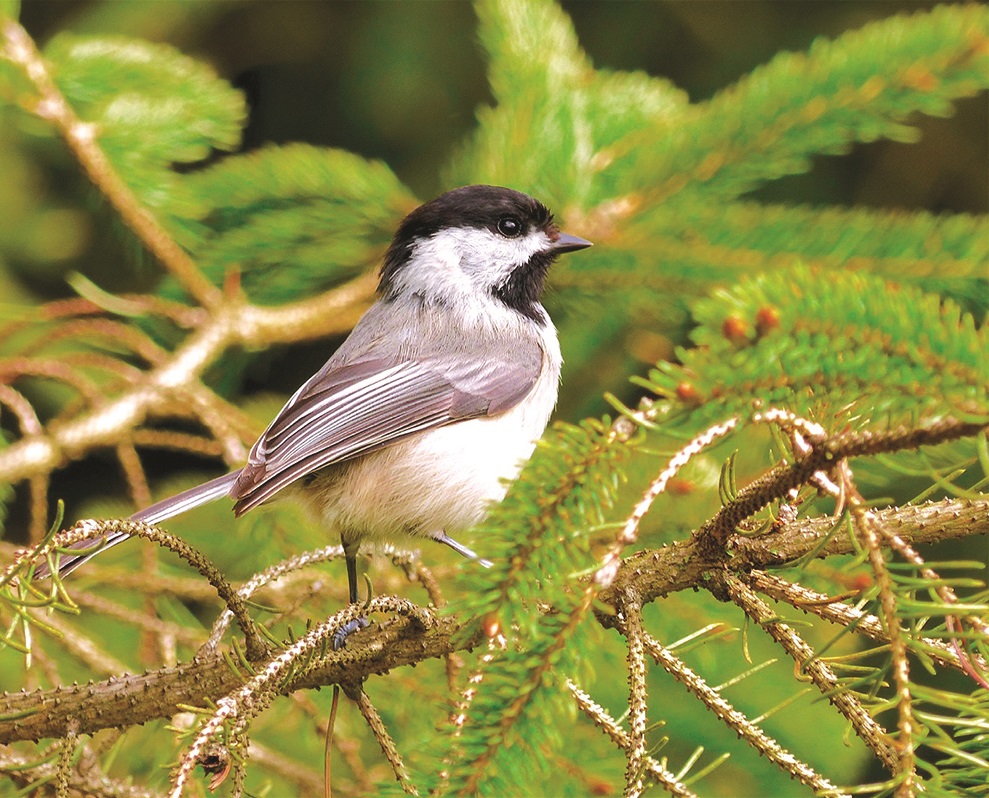One of the most common birds to see during the cold winter months is the black-capped chickadee, for these are non-migratory inhabitants of the North American continent’s deciduous and mixed forests.
They can lower their body temperature as much as 12–15 degrees from their normal 108° F when they sleep on cold winter nights—a feat that is quite unusual in birds. During the winter, chickadees travel and nest in flocks of eight to a dozen, looking for eggs and pupae to eat, as the insects and berries they choose in the summer are not available. They are also one of the most common visitors to household bird feeders.
They are confident around humans and can be trained to eat seed from an outstretched hand. Another remarkable characteristic is that they can remember up to a month where they have stored food! Even squirrels are not very good at that.
Another interesting behavioral characteristic of chickadees is that while traveling in flocks, the first one to see a predator gives a special warning call, which causes all the others to freeze in place. Once settled, they all emit high-pitched vocalizations that sound as if they are coming from all different directions. The predator is confused and not knowing where to initiate an attack, eventually flies off. At that time, the lead bird issues an “all is well” note and the flock comes back to life.
Come April, chickadees will be constructing nests: loose cups of plant fibers, moss and feathers in a tree cavity or nest box. Five to ten eggs can be laid from April through June. Incubation is 11–13 days and the young leave the nest 14–18 days from hatching.
